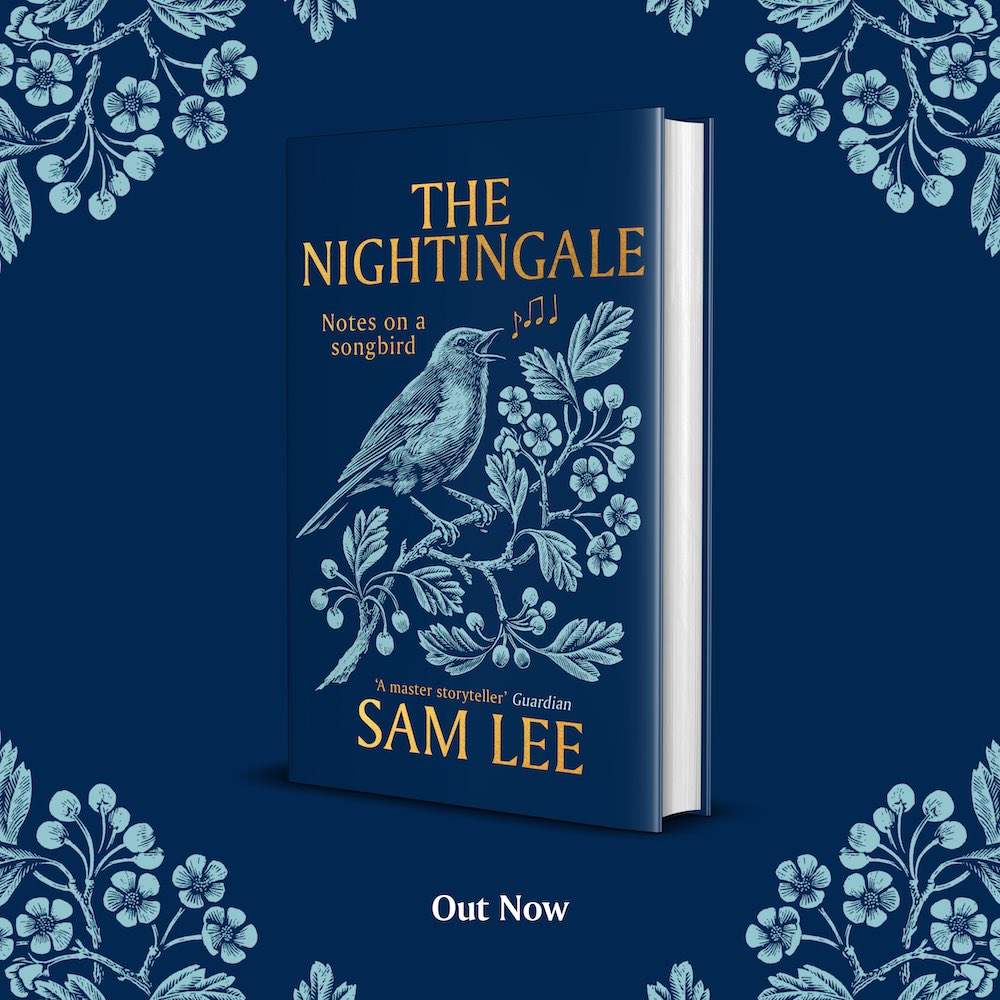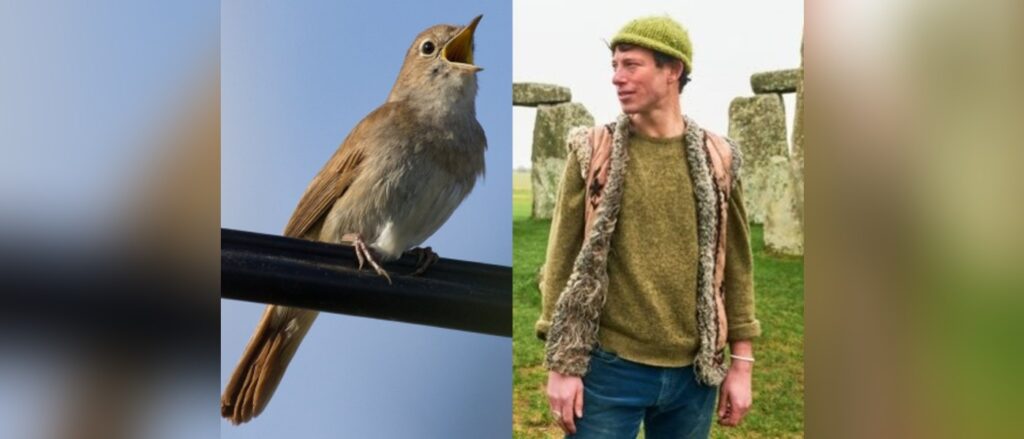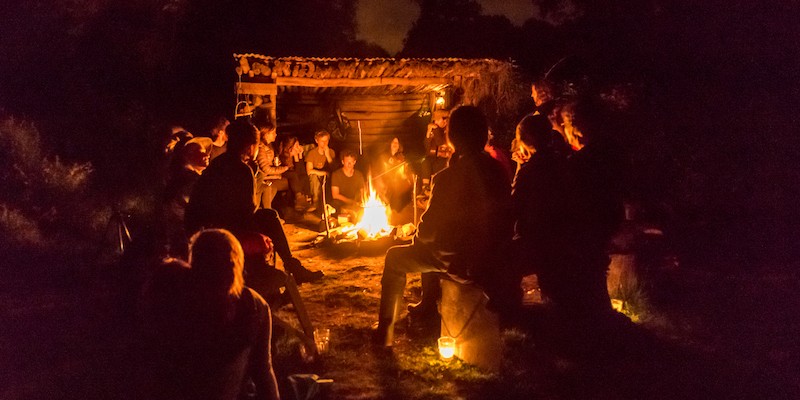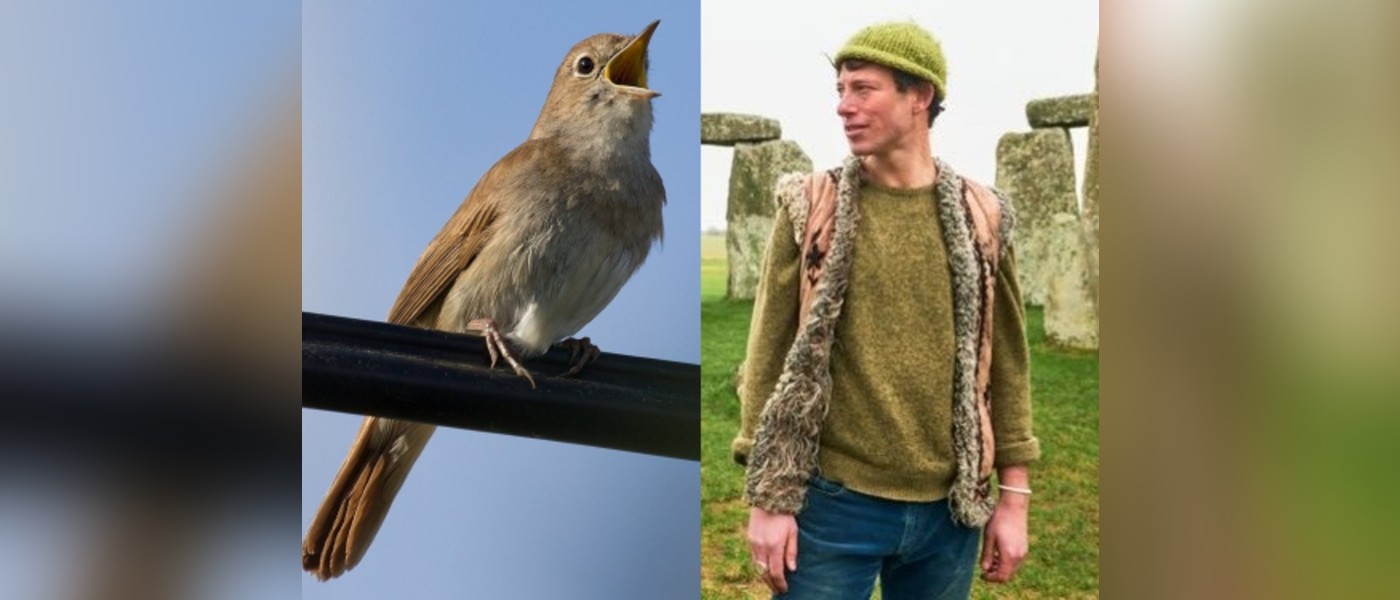Chief among spring singing birds in the hearts of poets from Nottingham to Nangarhār, the nightingale features as prima donna in the music of English folk singer Sam Lee.
Growing up with a deep love for nature, it was clear even over the telephone that Lee possessed that special awareness of the natural world around him that now comes only to certain people.
His duets with nightingales can be heard through his YouTube channel The Nest Collective, when in the English spring of April-May, he plants himself in a forest and with his village-elder-baritone, coaxes the birds to sing back.
Throughout the years he’s invited different collaborators to visit the nightingale’s thicket in order to continue to expand awareness of the “musical genius” of a bird that’s under threat in the UK.
Last year’s performances took place under the stars on the 50th anniversary of Earth Day, and included jazz trumpeter Byron Wallen, guitarist Justin Adams, folk singer Lisa Knapp, and even a brilliant musician performing Mongolian-style overtone singing.
Lee also has a new book called The Nightingale: Notes on a Songbird, in which he details the history of the nightingale in music, poetry, and folklore. It’s filled with enchanted anecdotes like those of Afghani rubab players attempting to lure a nightingale onto their tuning pegs with music.

I had the opportunity to talk with Lee about his new book, his yearly concerts in the forest, bird-song in the history of music, and how this most musical bird is at risk of disappearing from the English woods wherein the likes of Coleridge and Keats found its song so enchanting.
T’is no melancholy bird
“I’d been listening to them for years,” Lee tells me. “I was in love with their song but always as a listener.”
“A lot of contemporary music has birdsong on it in a very wallpaper-like way, never where the birds have been integrated so much,” he says, noting his Spotify playlist of music that includes birdsong in a principle role, and which features modern folk music but also very old traditional recordings.

In 2014 he had the opportunity to work on a documentary for the 90th anniversary of cellist Beatrice Harrison’s iconic recording for the BBC of her playing alongside a singing nightingale, and this was the first time he had the experience of hearing a nightingale sing back to him.
“That was like the big revelation,” says Lee. Afterwards he would go into English forests at night, pitch a tent, and sing with the birds until 2am, when both bird and bard would go to sleep.
“It’s a two-way thing really,” he told me, attempting to describe how it is to perform a duet with another species. “I’m listening to the bird, the bird’s listening to me, I’m trying as much as possible to be in relationship with the bird and sometimes I’ll play something and the bird will move key and start to adapt to me. It does go in both directions.”
In an interview with The Guardian, a reviewer of Lee’s book points out that the nightingale has a repertoire of 1,500 songs, calls, and croons, and is in the name or title of probably more than 600 pieces of music and literature.
POPULAR: ‘Like a Beautifully-tuned Instrument’: 2000 Microphones Unlock the Mystery of Why Hummingbirds Hum
Not only does the nightingale migrate to sub-Saharan Africa every year, but fewer and fewer are returning to forests in the UK, making every performance Lee can manage with them a real privilege. With COVID lockdowns essentially canceling most of last year’s gatherings, he looked to “drink in these nights with the nightingale in nature as much and as strongly as I possibly can.”
“I’m out until two, three, four o’clock in the morning sometimes and then up at dawn chorus a couple of hours later,” he says, detailing what he puts himself through about six weeks out of every year.
“And it just feels like that moment of the year when it’s just an incredible explosion of green when everything’s emerging and life is like, forcing its way out, and you really feel that everything’s vibrating really strongly, and you don’t want to miss a drop of it.”
Field notes on a songbird

Each nightingale is different, which makes each performance different, as well as gives the relationship between Lee and the bird a certain doomed romance, as after the bird ceases to sing in May and migrates thereafter, Lee can never be certain if the bird he connected so strongly with will ever return to him.
MORE: Eyes of Robins Have Magnetic Field-Detecting Protein that May Be Long-Sought Migration Sensor
I likened it to the relationship between the whaler and his wife, when come the morning he has to leave for weeks or months at sea, perhaps never to return from the dangerous work.
“There was a nightingale about six years ago, and the annoying thing was that he sung right next to a sewage treatment works, so it was a little noisy; he didn’t care,” says Lee, recalling one such brief romance.
“They [nightingales] have this croon, but they never had it as magnificent as he did, and it was a kind of whimpering sort of sound that he did. He would hold it for longer than any other bird had done to the point where your heart was just creasing listening to this moment.”
CHECK OUT: Rare Evidence Proves Birds Are Able to Change Their Culture to Become More Efficient
“And it was actually, weirdly, the same year when there was a blackbird where I was camping and every morning I’d wake up to this blackbird and it had the most incredible phrase, and it would be my passion waking up at five in the morning and hearing this blackbird do this riff, and I was like, ‘Oh my god if I were a guitarist I’d steal that riff and make a million dollars,'” he says. “But every time I’d go to record it he would stop.”
“And then… He disappeared and never came back, and I’ve always been like, ‘Where is that blackbird?’ I can kind of recall it in my sort of half-sleep when I’m really relaxed; I remember that blackbird,” he says.
“I think that helps me appreciate what we have even more, because I think… It’s like the wife of the whaler who knows he’s going to go away, so they’re just going to have as much time together as absolutely possible,”
In his book, Lee attempts to recount different stories about the various relationships we have with both music and nature, and how they so often relate to one another.
“It’s about saving a relationship to music as much as it is about saving a relationship with nature,” he summarizes, “and that in this time of ecological extinction, that we have to look even harder at what we have to lose, these species that have inspired people for thousands of years are disappearing on our watch.”
Lee explained that overgrazing and pesticides are impacting British insect populations, creating a lack of food for the nightingales, while habitat loss in the UK and along its migration route further contributes to the bird’s decline.
But where most endangered species have to try their best with only a handful of conservation dollars and an unsung study in a scientific journal, the nightingale has an extraordinary spokesman, whose passion for their song, and whose passion for sharing it presents a different proposition to the British people and government—that to lose the bird is to lose the muse of Coleridge, Keats, and so many more artists both living and as yet unborn.
“‘Tis the merry Nightingale that crowds, and hurries, and precipitates with fast thick warble his delicious notes, as he were fearful that an April night would be too short for him to utter forth his love-chant, and disburthen his full soul of all its music,” — Samuel Taylor Coleridge.
(WATCH the highlights from a recent Singing With Nightingales concert below.)
SPREAD Nature’s Song Loud and Clear—Share This Story…




















